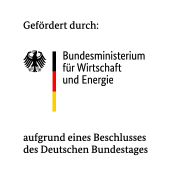Development of metal oxide sensors for gas analysis for the control of gas atmospheres in industrial furnaces
In many industrial sectors, gas analysis is an indispensable tool for economic and reliable process control. Particularly in industrial furnace technology, knowledge of the current state of the furnace chamber atmosphere plays an important role and serves product quality, process control and combustion optimization as well as function monitoring, plant and personnel safety and environmental protection.
The research objective is to make semiconductor sensors known from the automotive industry applicable for industrial furnace technology by adaptation and further development. Cost-effective metal oxide sensors for H2O, CO and NO measurement open up the possibility of implementing the monitoring of process and protective gas atmospheres at low cost through innovative measurement, control and automation strategies.
For this purpose, laboratory samples of the humidity, carbon monoxide and nitrogen oxide sensors have been produced at the Institute for Inorganic Chemistry (IAC). These laboratory samples were evaluated at the IAC under laboratory conditions and electrically characterized.
A gas sensor test bench has been set up at the Department for Industrial Furnaces and Heat Engineering (IOB). The humidity sensor was tested in a chamber furnace after being transferred to the gas sensor test bench at the IOB.
The tests on the humidity sensor based on the zeolite H‑ZSM‑5 have shown that
- the sensor material H‑ZSM‑5 is thermally stable up to 1000°C and is not reduced in an H2 atmosphere,
- the sensor shows a significant increase in conductivity in an H2 atmosphere,
- no direct influence of the flow velocity on the sensor impedance can be detected,
- at a temperature of 500°C humidity concentrations up to 1600 ppm(V) can be clearly detected,
- the sensor shows no significant impedance changes to changes in humidity concentration at 750°C operating temperature.
Investigations on the carbon monoxide sensor have shown that
- gallium oxide as only one of the investigated materials (Ga2O3, WO3, BaSnO3) shows a sensitivity to CO at 600°C,
- gallium oxide is nanoparticular and single-phase even after a temperature treatment of 1000°C.
The tests on the nitrogen oxide sensor have shown that
- which (NO+,Na+)-Al2O3membrane is not suitable for use in a temperature range of T ≥ 300°C.
Final report
Echterhof, T.; Neumeier, S.; Bölling, R.; Pfeifer, H.; Simon, U.: Entwicklung von Metalloxid-Sensoren zur Gasanalyse für die Überwachung von Gasatmosphären in Industrieöfen, FOGI-Nr. FV 685, Forschungsgemeinschaft Industrieofenbau e.V., Frankfurt, Mai 2008

This research project was applied for by the Forschungsgemeinschaft Industrieofenbau e.V. via the Forschungskuratorium Maschinenbau e.V. and financially supported by the Bundesministerium für Wirtschaft via the Arbeitsgemeinschaft industrieller Forschungsvereinigungen e.V., AiF-Nr. 202 ZN / 1.